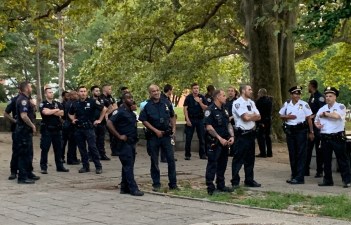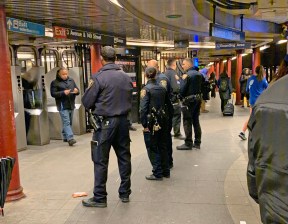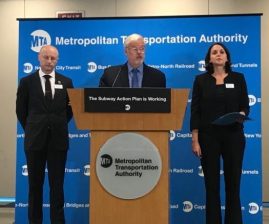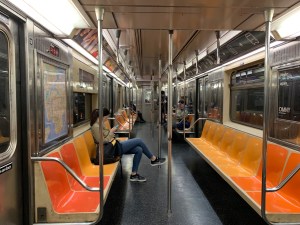IN A NUTSHELL: Why Car Toll Hikes Are Crucial When Transit Fare Hikes Are an Abomination
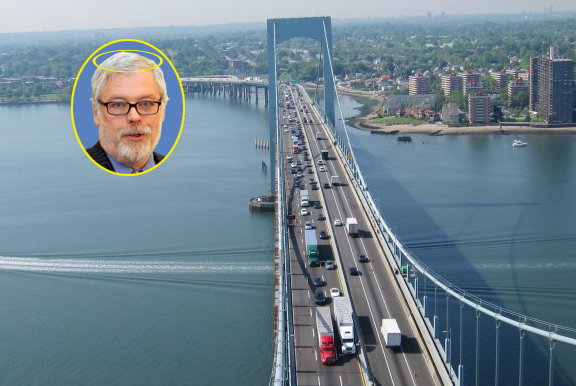
When the MTA decided earlier this week to take subway and bus fare hikes off the table for the immediate future, car drivers predictably whined that their fares — in the form of bridge and tunnel tolls — were still expected to rise.
This morning, MTA Chairman and CEO Pat Foye spoke for millions of transit users when he patiently explained that car drivers are (we’re paraphrasing) selfish jerks who need to pay more for the damage they do to our region and our planet.
Here was his exchange with NY1’s Pat Kiernan this morning. Foye spoke forcefully about why drivers must be taxed. In this part of the conversation, Kiernan refers to an earlier point Foye had made about how the agency decided against fare hikes because people are struggling right now.
Kiernan: OK, so let’s come back to, to the subway and bus fares and then the bridge and tunnel tolls. Some of what you said when you were talking about the reasons for leaving subway and bus fares where they are would, in the view of people who are driving in their commute, apply to them as well. They’ve lost their jobs because of the pandemic, it’s a difficult time. Why are toll hikes still under consideration when subway fare hikes are not?
Foye: Look, one of the reasons we want to do it, Pat, is to reduce congestion and improve air quality and frankly to move commuters from cars to subways and buses. We’re providing robust service on subways and buses, but there are some who have to drive for various reasons or choose to drive, and if they choose to drive, there’s a cost associated with that. They tend to be higher income people on average, more than the average subway or bus customer — and that’s an average, that’s not every customer.
The last point I make, Pat, is that revenues from our bridges and tunnels subsidizes mass transit, frankly is a significant component of the budget, of the revenues in the budget for subways and buses. So, it’s that combination of factors, and if we’re able to convince people to leave their cars and to move to mass transit — and I’ll note 75 percent of our customers say that subway platforms and cars have never been, never been cleaner — if we can move some of those drivers to mass transit that would be a good thing for everybody, for them and for the region.
The MTA board is expected to vote on bridge toll increases in February.
In another interview on WCBS 880 this morning, Foye offered another rationale for the proposed 4- to 8-percent bridge toll hikes: people are driving too much.
“Passenger cars and trucks volumes on our bridges and tunnels have come back strong as they have around the country and around the world following the pandemic,” he said, adding that such traffic is back to 90 percent of pre-pandemic volumes. And those people, unlike the subway and bus riders are not typically “essential workers, first responders and people who don’t have the option of working remotely or getting in their car to drive.”
Subway and bus riders tend to be “low income or living in communities of color,” he added. “We’re respectful of that. And increasing the tolls is likely to cause some of our bridge and tunnel customers to move to mass transit, which will reduce congestion, will improve air quality and be better for the entire region.”
Advocates were quick to have Foye’s back.
“The chairman is exactly right,” said Danny Pearlstein of Riders Alliance. “New York’s recovery must be centered on public transit or we won’t fully recover at all. We’re either a transit city or we’re marooned in gridlock.”
